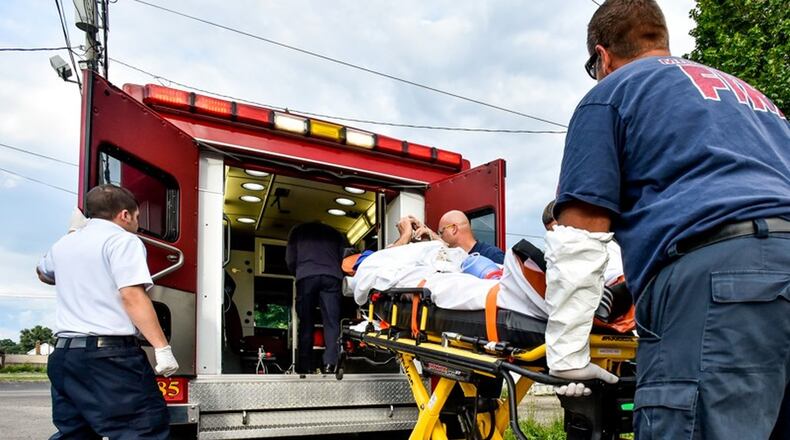The federal judge handling the MDL, Judge Dan Aaron Polster in the Northern District Court of Ohio, has not minced words describing the current state of affairs.
RELATED: Butler County commissioners sue 20 major drug companies and distributors
“In my humble opinion, everyone shares some of the responsibility and no one has done enough to abate it. That includes the manufacturers, the distributors, the pharmacies, the doctors, the federal government and state government, local governments, hospitals, third-party payors and individuals, just about everyone we’ve got on both sides of the equation in this case,” a transcript of a hearing before Polster reads.
“The federal court is probably the least likely branch of government to try and tackle this, but candidly, the other branches of government, federal and state have punted. So it’s here… My objective is to do something meaningful to abate this crisis and to do it in 2018.”
Polster has set up two tracks in the case, one is on the path toward settlement and the other to trial. He selected two cases from Ohio and one from Chicago as “bellwether” or test cases. Legal decisions made in those cases — a motion to dismiss has already been filed in the Summit County case by the drug manufacturers — will stand for the rest of the suits in the MDL.
Andrew Pollis, a law professor at Case Western Reserve University School of Law in Cleveland, said he has had personal experience practicing before Polster and he is certain a settlement will be pushed. litigation can take many years to conclude, so a settlement being reached this year would be an “ambitious goal,” he said.
“Nobody wants to actually try these cases, the drug companies certainly don’t, maybe their lawyers do because it’s a money-making thing for them, but the drug companies would rather get out of this as quietly and cheaply as they can,” Pollis said. “Of course the risk of a trial — especially if it’s a bellwether — is that if the jury finds huge liability that settlement becomes really difficult because the plaintiffs are going to start to bump their numbers up.”
The individual plaintiffs, like Butler County, can join in the settlement or opt to try their own case.
Many have likened this MDL to the massive tobacco litigation. In the mid-1990s, the states’ attorneys general sued the four big tobacco companies, claiming their products caused significant cost to public health systems, among other allegations. A settlement was reached in 1998 that included a $205 billion payout over 25 years to 46 states. Four states settled individually.
When the local lawsuit was filed, Butler County Commissioner Don Dixon said the tobacco litigation was very successful and he believes the new wave of opioid litigation can have a similar impact. He said education and prevention are keys to beating the opioid epidemic.
“The county can’t do this financially on its own,” Dixon said. “This is the kind of money it’s going to take to have an impact, to have a real plan. I think the drug companies are responsible somewhat for that. I think the distributors are too, the more pills they sell the more money they make. It will be the beginning of a global solution.”
Butler County Health Commissioner Jenny Bailer said money is crucial in the opioid fight, to help those already addicted as well as those who might avoid the drugs because of preventative measures the money could fund.
“There is so much work that needs to be done to get out ahead of this epidemic we are experiencing as a country, as a county, as a state — and it all requires money,” she said. “So any money that would come from this lawsuit that could go back to the people doing the actual work on the ground, working one-on-one in treatment and rehabilitation and especially in prevention would be really great.”
There are numerous groups around the county working on this problem — from the mental health board’s $3.6 million Opiate Business Plan to quick response teams operating in several communities that seek out addicts who have overdosed and get them into treatment.
Butler County Coroner Dr. Lisa Mannix recently called the opioid epidemic “a big beast” and confirmed 232 overdose deaths in the county last year, a 20.8 percent increase from 2016. In 2012 there were a total of 30 heroin related deaths. There have been 67 known or suspected overdose fatalities in the county to date this year.
Butler County Prosecutor Michael Gmoser recommended the county file the lawsuit, so they would have a seat at the table when settlements start. He has initiated some of his own efforts to fight the epidemic, like bringing recovered addicts into schools to educate youths about the ravages of opioid addiction.
He said he is glad Polster is taking an aggressive stance on this problem.
“ I would say that the defendants in this case are feeling the heat. I hope so anyway,” Gmoser said.
About the Author
